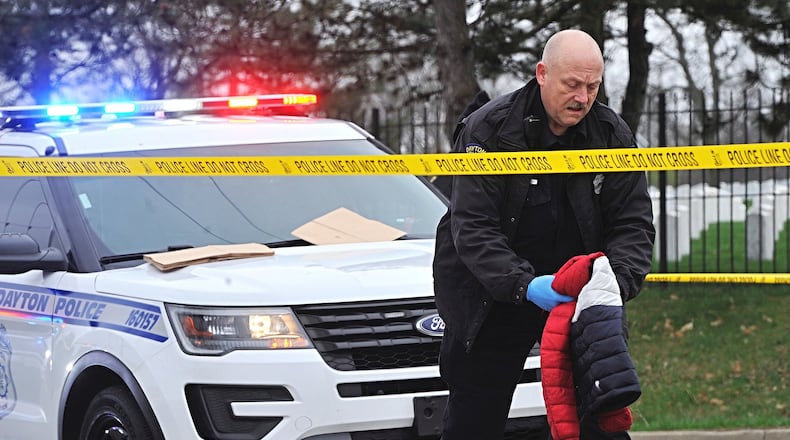The public health crisis may have convinced some people to take a break from law-breaking, officials say.
“If social interaction results in conflict, and there is less social interaction, the likely conclusion would be there’s less conflict,” said Dayton police Chief Richard Biehl.
However, police officials say they were dismayed to see increases in some closely watched violent crime categories, and crime overall this year is down only slightly compared to 2019.
Coronavirus: Complete Coverage by the Dayton Daily News
In April, crime in the city was down more than 14% from April 2019, according to the Dayton Police Department’s Compstat report.
Simple assaults fell to 66 incidents last month, down from 124 last year. Drug and narcotics violations declined nearly 41% year-over-year.
Police received 60 reports of residential burglaries, which was a decline of 19%.
The state’s stay-at-home order, deteriorating economic conditions and fears about COVID-19 may have contributed to these trends.
MORE: Dayton to permanently close 2 golf centers
Residents were told to stay home as much as possible, which could mean there were fewer times when homes were left unguarded.
Also, many people were laid off or worked remotely from home, also meaning homes were left empty less often.
Generally, fewer people were on the streets last month and there was less traffic on city roadways, which led to far fewer traffic violations.
Also, many drug and narcotics charges stem from traffic stops, when police interact with motorists or passengers they suspect possess or have used illicit substances.
“It’s certainly likely that there’s been less police contact with individuals, where those contacts would result in the discovery of drugs,” Biehl said.
MORE: Homeownership up in Ohio. But will it last after the pandemic?
Some people wrongly assume that crime always increases during hard times and economic downturns, said Biehl.
But research by the Russell Sage Foundation and The Stanford Center on Poverty and Inequality found that crime decreased between 2007 and 2010, when the economy was in shambles.
Some types of crimes are significantly less likely during economic contractions, possibly because people stay home and aren’t going to work or out to socialize as much.
Most people who commit crimes aren’t committing crimes most of the time, Biehl said, and law-breakers tend to have similar daily routines to everyone else, when they are not breaking the law.
Social interactions sometimes leads to conflict, and since fewer social interactions took place during the lockdown, there were likely fewer opportunities for conflict, Biehl said.
Biehl also said there is a strong correlation between alcohol use and violent crime, and alcohol consumption also means people are more vulnerable and likely to be a victim of crime.
For instance, some assaults occur when people have been drinking and disagreements or arguments escalate into violence.
But most bars and many drinking establishments weren’t open in April, so bar fights and altercations were not possible.
The April data wasn’t all positive. Violent crime — a top law enforcement priority — increased 18% year-over-year.
There were 17 robbery reports last month, up from 9 in April 2019. Police received 55 reports of aggravated assault (up 23%) and 68 reports of motor vehicle theft (up 19%).
Overall, crime in the city is down about 0.3% through May 21, compared to the same period last year, police data show.
As the economy and social activities return to something more like normal, it’s possible that crime opportunities could increase, Biehl said.
But it’s unclear how severe and how long this crisis will last, which makes it nearly impossible to predict its impact on public safety, he said.
“It’s just too hard to say what the future has in store,” he said.
Biehl said welfare checks have increased and mental health calls have surged, which is concerning.
About the Author

